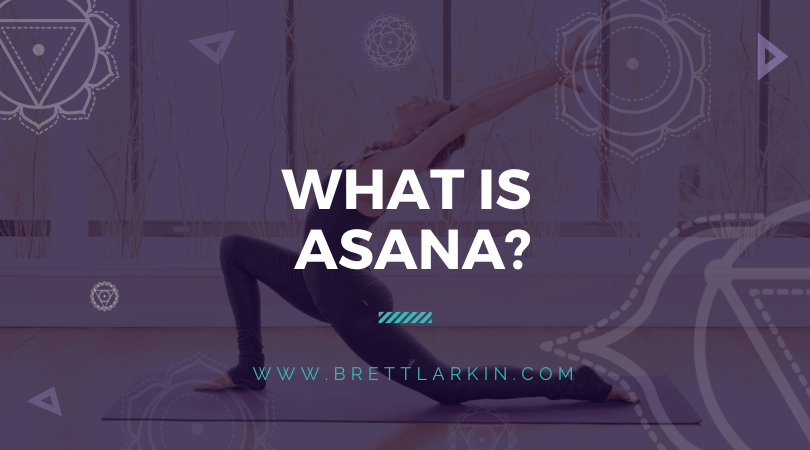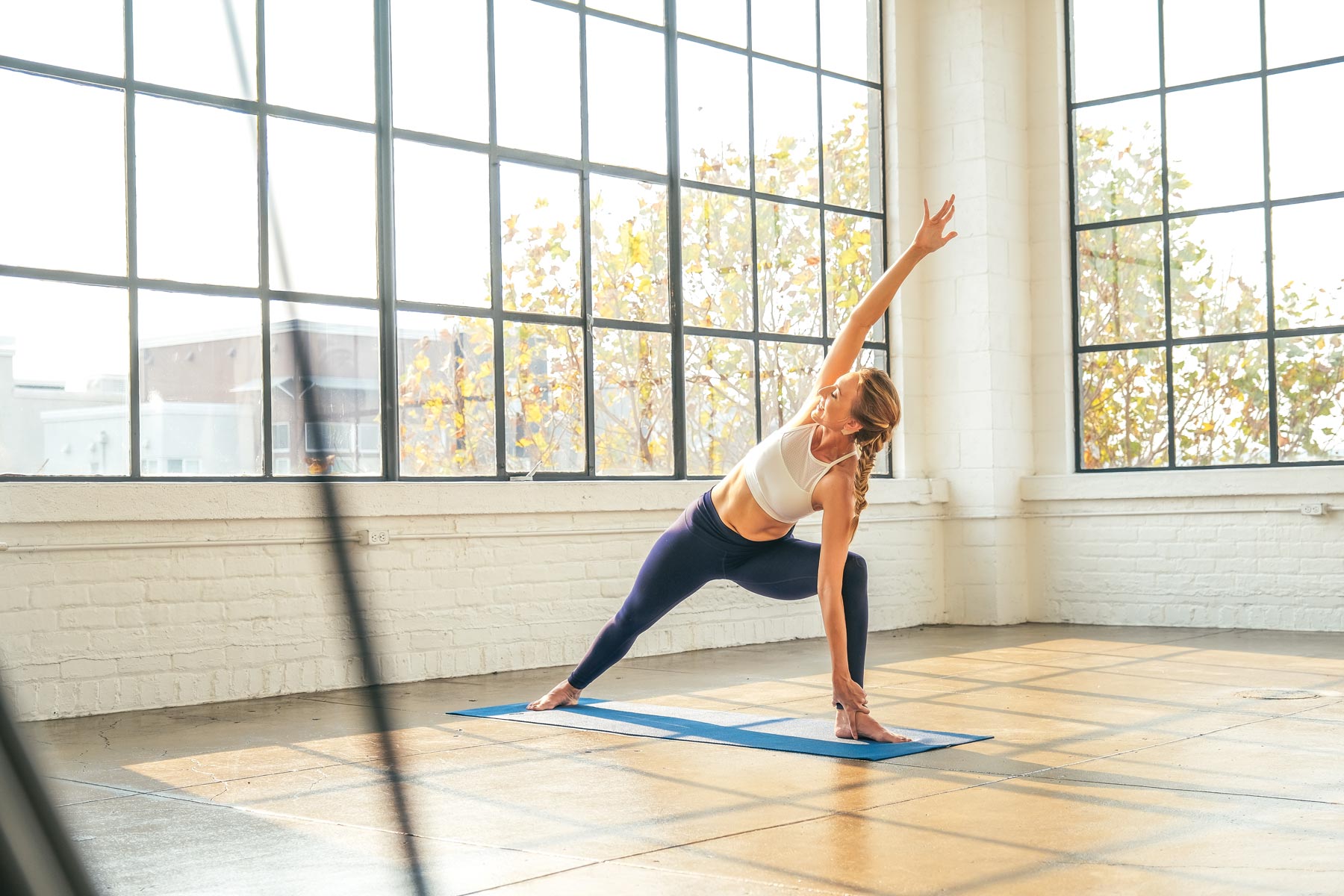
You may be wondering… what is asana?
In Sanskrit, it translates to “seat” in English, but it doesn’t exactly mean to sit.
You may be familiar with yoga asana…
…but did you know that what we commonly lump into “yoga” is an 8-fold path which includes yama, niyama, asana, pranayama, pratyahara, dharana, dhyana, and samadhi?
One of the most popular yoga terms used today, asana simply refers to the postures and different breathing techniques and is super important in any yoga practice.
Modern yoga sometimes loses this notion, as society is more focused on exercise, but it is still important to know.
Asana is the physical part of yoga that most are familiar with. This yoga practice involves incorporating the mind and the breath into the physical postures.
In Master Pantanjali’s Yoga Sutras, he describes asana as “steady and comfortable,” meaning you should be able to hold the posture for more than 5 minutes without twitching an eye. (Um, hello, pratyahara)
You know you’re doing asana right, if you notice that your state of mind is altered after practicing, meaning you feel more relaxed, meditative and calm!
With time and dedication to your practice, you may also feel more flexible, open and have a better posture.
You Might Also Like: The Complete Glossary of Sanskrit Words Used in Yoga

What Are the Different Yoga Asanas?
Most of the Sanskirt yoga postures names include the word asana in them, for example, Marjariasana (cat pose) or Garudasana (eagle pose) or Trikonasana (triangle pose).
Some important beginner asanas to know are:
- Adho Mukho Svanasana (Downward-Facing Dog Pose)
- Bhujangasana (Cobra Pose)
- Sarvangasana (Shoulderstand)
- Halasana (Plough Pose)
- Matsyasana (Fish Pose)
- Pachimotanasa (Sitting Forward Bend)
- Salabhasana (Locust Pose)
- Dhanurasana (Bow Pose)
- Padahastasana (Standing Forward Bend)
- Trikonasana (Triangle Pose)
- Shavasana (Corpse Pose)
In the ancient yogic text, Hatha Yoga Prapdika there are 84 basic yoga asana postures you should be aware of.
Ashtanga yoga is a great way to learn asana names since the sequences are repeated over and over again.
If you want to learn the Sanskrit asana names of each pose, you can make flashcards or continue taking yoga classes until your brain understands it all!
How Can I Start Practicing at Home?
Some great asanas to start with are the cobra pose and plank pose. You can focus on yogic breathing to increase your prana. Cobra pose (Bhujangasana) is a perfect asana to increase blood circulation, massage your internal organs and strengthen your leg muscles and thighs. It will also lengthen your neck and spine, create a sense of relaxation in your body and alleviate stress. You can practice this asana in vinyasa, or even restorative yoga (in the form of baby cobra or Sphinx pose).
Standing postures like Mountain Pose (Tadasana) help with shoulder pain as you learn to relax your shoulders and stand tall. It stimulates blood circulation, regulates blood pressure and helps the digestive system.
Another yoga pose that most yogis love is child’s pose (Balasana). It is when you kneel onto your knees and let your hips fall back as you stretch out your hips and spine. If you practice yoga, you will love this asana, and if you’re an instructor make sure to include Balasana as a resting pose in your yoga sequence!
There are many different types of yoga styles, including Sivananda, Iyengar yoga, Hatha yoga, Yin yoga, raja yoga, and kundalini. Once you feel steady in your asana practice you can incorporate different breathing techniques and hold the postures for long periods. There are many variations to asana, and people love to get creative with their vinyasa flow.
You can also find yoga exercises that will improve your balance and concentration. Yoga is scientifically proven to improve your health and well-being and asanas are a great place to start!
If you’d like some personalized guidance, then you can join me for an at-home yoga challenge 🙂
Soon enough your asana practice will be effortless and you’ll be able to understand everything your yoga instructor is saying in Sanskrit without blinking an eye.
Next Steps
- If you’re interested in learning the three skills that empower you to embody your yoga off the mat to get the results you desire in your personal life, check out my Yoga for Self Mastery course.
- Explore my knowledge hub for How to Become a Yoga Teacher or consider becoming a Somatic Yoga Coach in my newest certification program.
- Practice yoga with me on my YouTube channel with over a thousand free classes.
Experience 3 Training Videos from Inside My 200-Hour Online YTT

YOU MIGHT ALSO LIKE
- What is Kriya Yoga? The Philosophy and Practice
- Uddiyana Bandha: Tapping Into Your Deep Core
- 4 Reasons Hasta Bandha Is Essential To Your Yoga Practice
- Vitarka Mudra: What It Is and How Do You Use It?
- Shakti Mudra: What It Is and How Do You Do It?
- Garuda Mudra: What It Is and How Do You Use It?
- Kali Mudra: What It Is and How Do You Do It?
- Shunya Mudra: What It Is and How Do You Do It?
- Varuna Mudra: What It Is and How Do You Use It?
- Vayu Mudra: What It Is and How Do You Use It?
- Samana Vayu: The Energy of Balance & How to Access It
- Apana Vayu: The Energy of Release & Surrender
- Udana Vayu: The Ascending Wind
- Prana Vayu: The Breath of Vitality
- Vyana Vayu: The Energetic Secret to Flow
Learn how to do 11 of the most popular yoga poses correctly. Free video + PDF download.










